by Patrick McShea
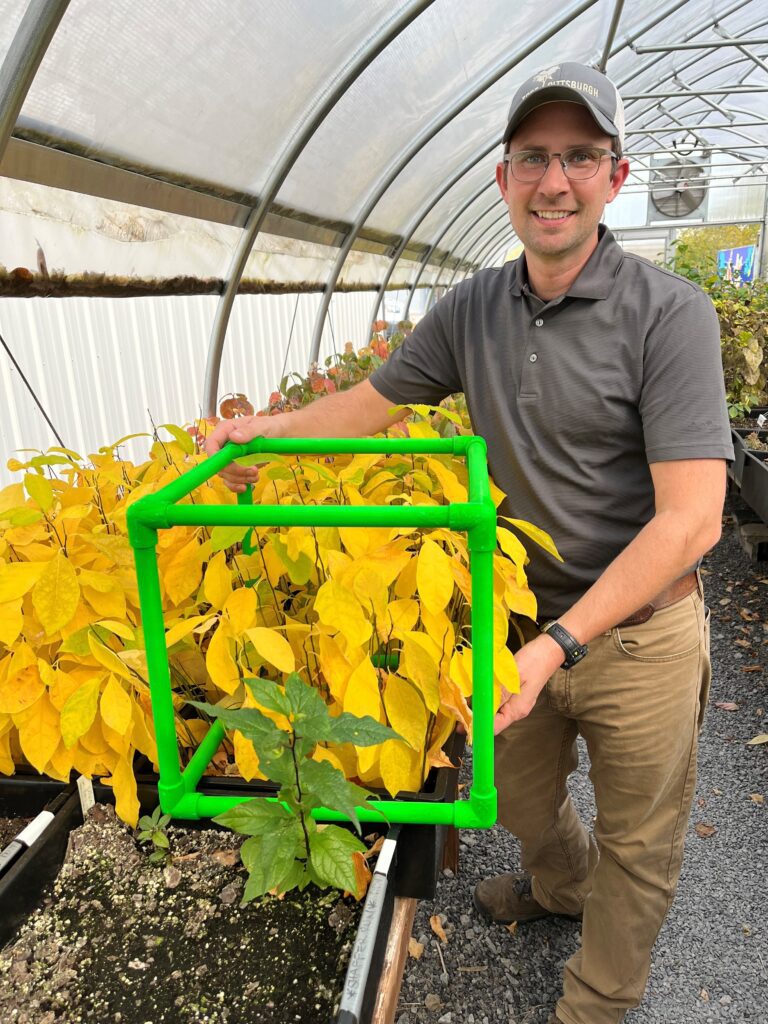
On a late October afternoon, Joe Stavish, Director of Education for Tree Pittsburgh, uses a biocube in one of the organization’s greenhouses to show off the golden fall foliage of northern spicebush saplings. If the cube could accompany one of these native shrubs when it’s planted in a local park as part of forest understory restoration, the open-sided green frame might document a surprising variety of wildlife.
During the early weeks of spring, northern spicebush again adds bright color to forest landscapes when its leafless branches bear tiny gold flowers whose nectar and pollen provides critical nourishment for a host of native bees. Close attention to blossom visitors within the biocube could lead to the documentation of dozens of insect species at this stage.
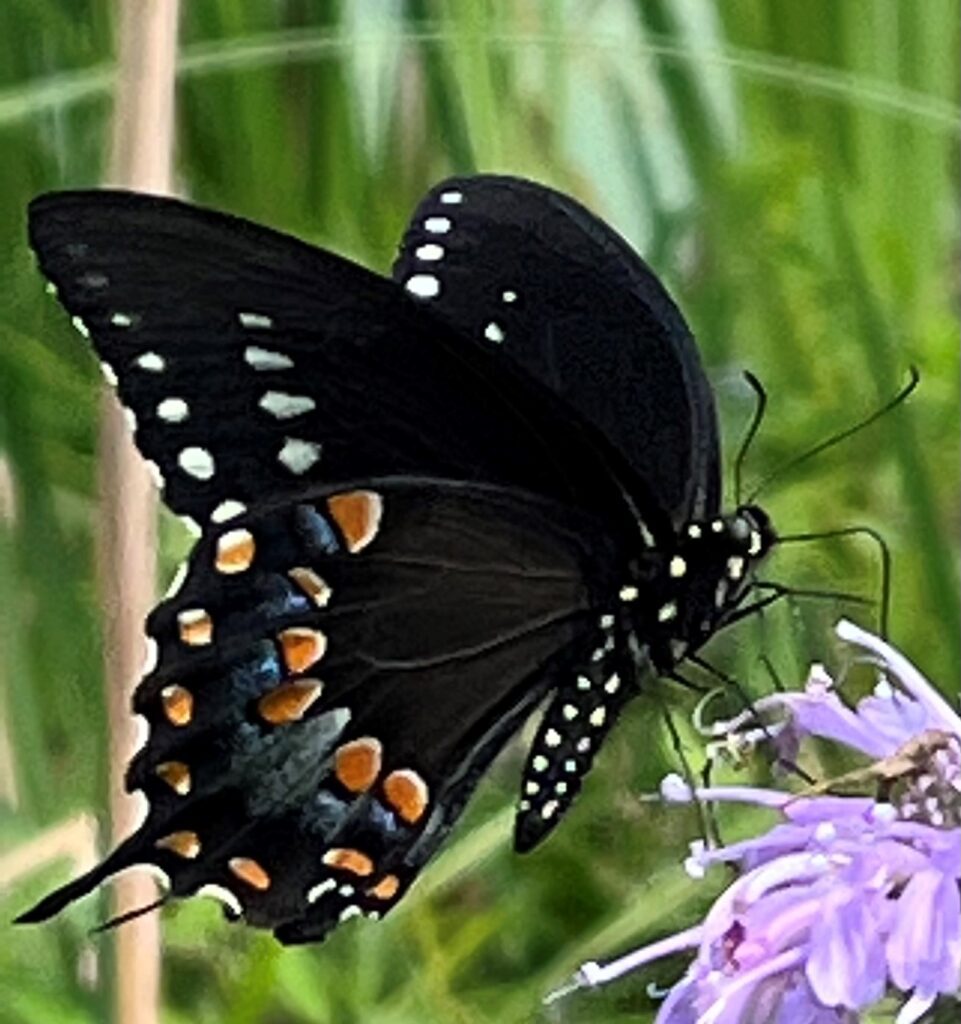
Early spring observations might also detect what appears to be a narrow, two-inch-long dead leaf attached to one of the shrub’s twigs. This is the over-wintering chrysalis of the spicebush swallowtail, a butterfly whose caterpillars are known to favor the spicebush leaves as a food source. After the plant is fully leafed, observation of spicebush foliage within the biocube might produce a sighting of the caterpillar’s distinctive fifth instar or larval stage.
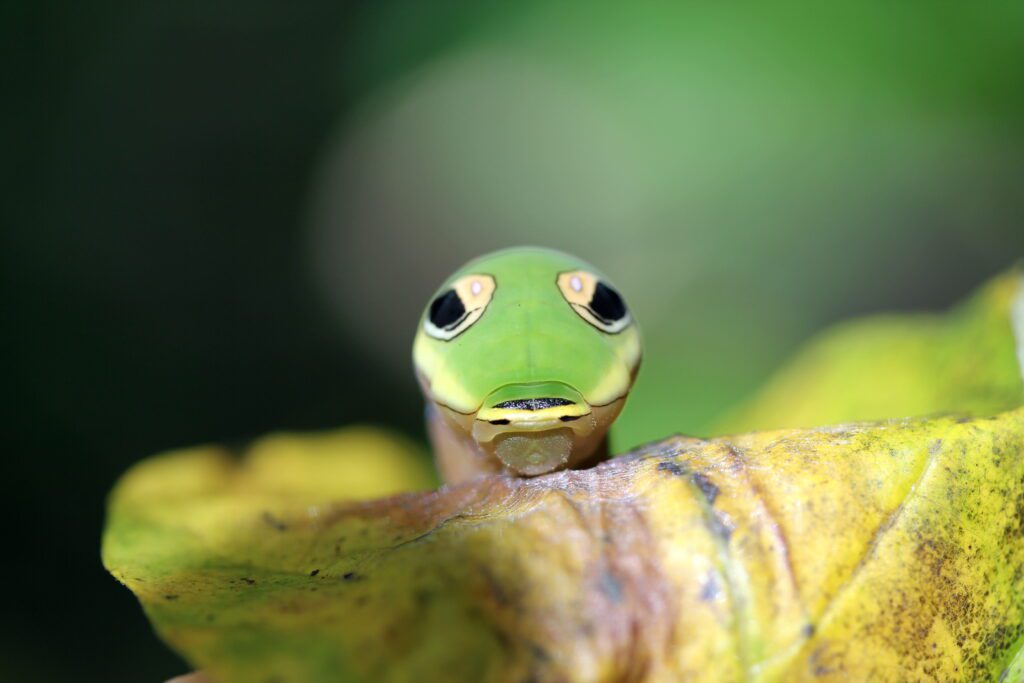
The broad head of the caterpillar at this stage sports two false eye spots, markings that might provide some predator protection by contributing to an overall visual impression of a small alert snake.
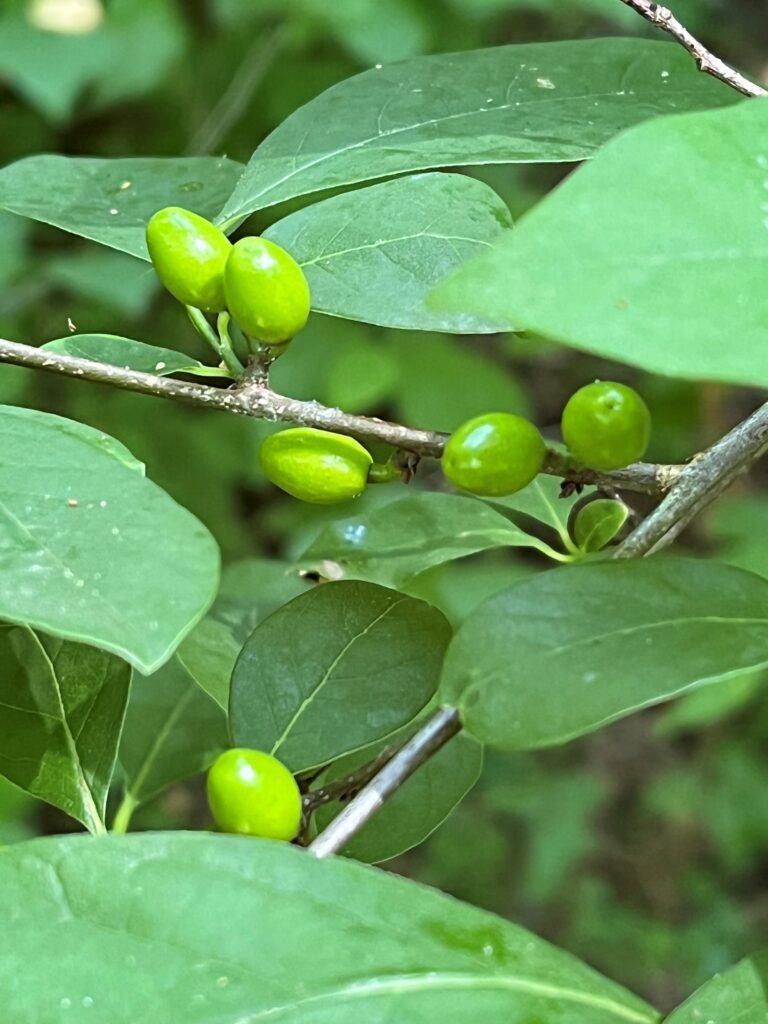
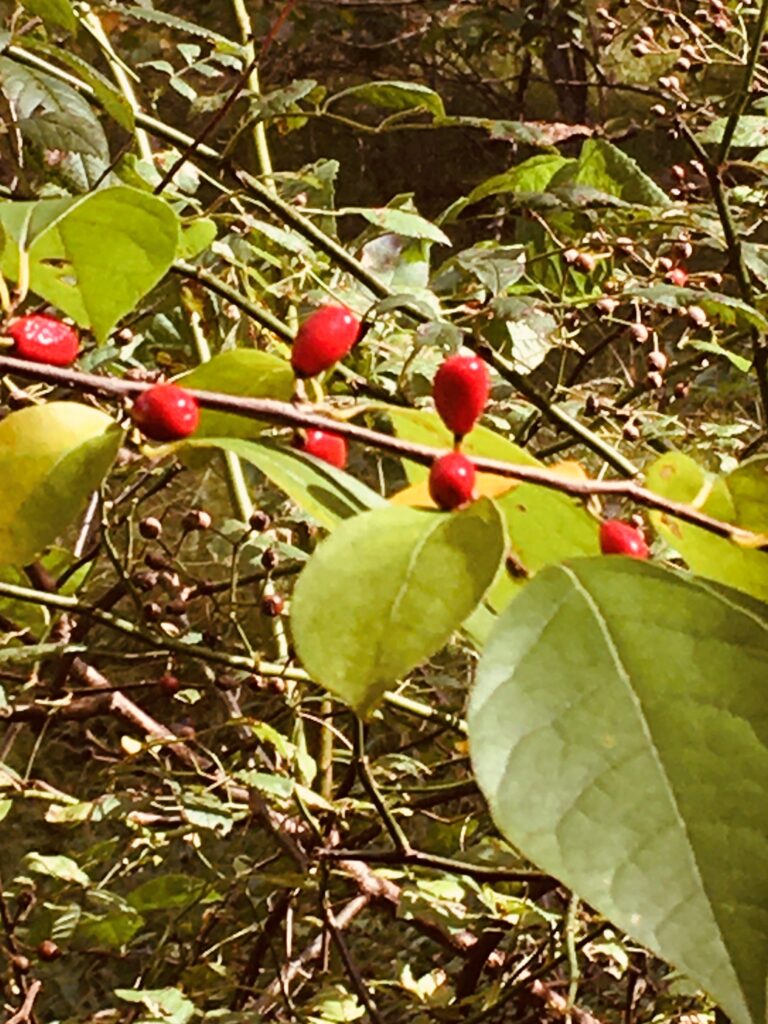
In late summer and early fall, when the ripening of the plant’s fruit is signaled by a green to red color change, the biocube would likely have some avian visitors. The ripened fruits are an important seasonal food source for Wood Thrush and other migrating songbirds. In actions that would likely occur outside the bounds of the biocube, these birds contribute to overall health of northern spicebush in our forests by spreading the plants’ seeds in their droppings.
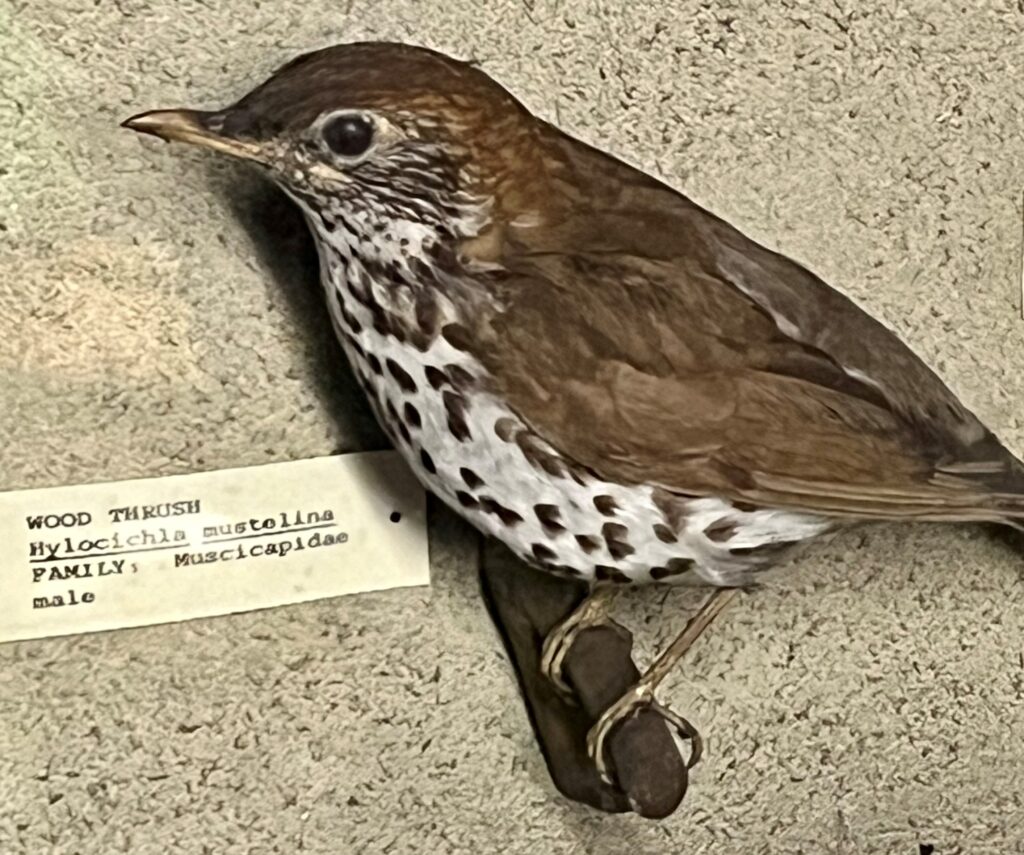
Patrick McShea is an Educator at Carnegie Museum of Natural History.
Related Content
Carnegie Museum of Natural History Blog Citation Information
Blog author: McShea, PatrickPublication date: November 10, 2023
